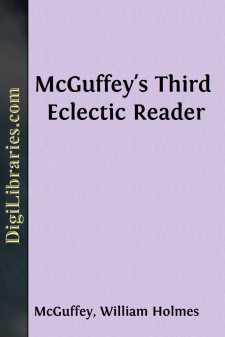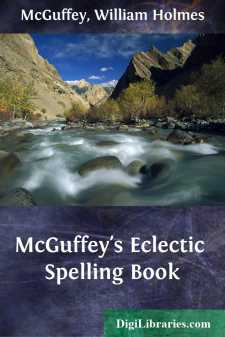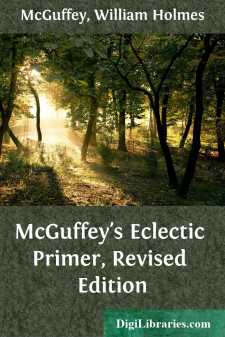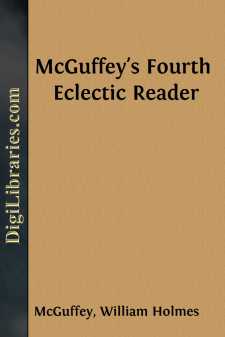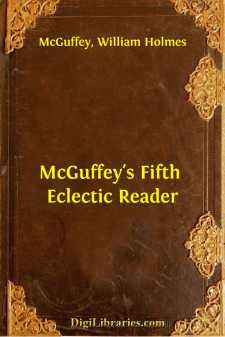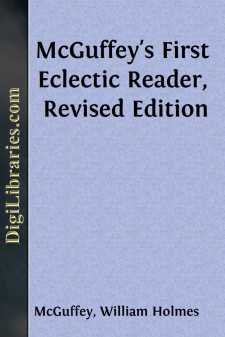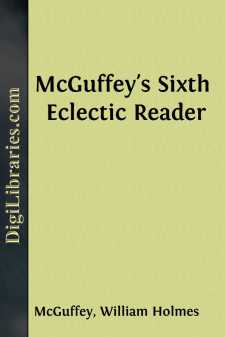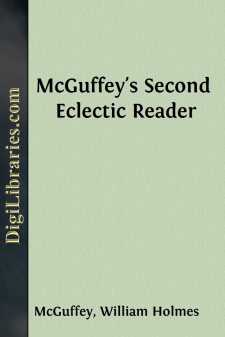Categories
- Antiques & Collectibles 13
- Architecture 36
- Art 48
- Bibles 22
- Biography & Autobiography 813
- Body, Mind & Spirit 142
- Business & Economics 28
- Children's Books 13
- Children's Fiction 10
- Computers 4
- Cooking 94
- Crafts & Hobbies 4
- Drama 346
- Education 46
- Family & Relationships 57
- Fiction 11828
- Games 19
- Gardening 17
- Health & Fitness 34
- History 1377
- House & Home 1
- Humor 147
- Juvenile Fiction 1873
- Juvenile Nonfiction 202
- Language Arts & Disciplines 88
- Law 16
- Literary Collections 686
- Literary Criticism 179
- Mathematics 13
- Medical 41
- Music 40
- Nature 179
- Non-Classifiable 1768
- Performing Arts 7
- Periodicals 1453
- Philosophy 64
- Photography 2
- Poetry 896
- Political Science 203
- Psychology 42
- Reference 154
- Religion 513
- Science 126
- Self-Help 84
- Social Science 81
- Sports & Recreation 34
- Study Aids 3
- Technology & Engineering 59
- Transportation 23
- Travel 463
- True Crime 29
McGuffey's Third Eclectic Reader
Categories:
Description:
Excerpt
10 ECLECTIC SERIES.
EMPHASIS.
NOTE.—If the pupil has received proper oral instruction, he has been taught to understand what he has read, and has already acquired the habit of emphasizing words. He is now prepared for a more formal introduction to the SUBJECT of emphasis, and for more particular attention to its first PRINCIPLES. This lesson, and the examples given, should be repeatedly practiced. In reading and in talking, we always speak some words with more force than others. We do this, because the meaning of what we say depends most upon these words. If I wish to know whether it is George or his brother who is sick, I speak the words George and brother with more force than the other words. I say, Is it George or his brother who is sick? This greater force with which we speak the words is called EMPHASIS. The words upon which emphasis is put, are sometimes printed in slanting letters, called Italics,* and sometimes in CAPITALS. The words printed in Italics in the following questions and answers, should be read with more force than the other words, that is, with emphasis. Did you ride to town yesterday? No, my brother, did. Did yon ride to town yesterday? No, I walked.
* Italics are also used for other purposes, though most frequently for emphasis.
THIRD READER. 11
Did you ride to town yesterday? No, I went into the
country.
Did you ride to town yesterday? No, I went the day before.
Have you seen James or John lately? I have seen James,
but not John.
Did you say there were four eggs in the nest, or three?
There were only three eggs, not four.
Were the eggs white or blue? The eggs were white, not
blue.
Had the boy a hat on his head, or a cap? He had a cap on,
not a hat.
PUNCTUATION.
Punctuation should be thoroughly studied by the pupil, in order that he may become perfectly familiar with the marks and pauses found in the reading lessons of this volume.
MARKS AND PAUSES.
These marks are used to point off written or printed matter into sentences and parts of sentences, and thus to assist the reader in obtaining the meaning of the writer. They seldom indicate the length of the pause to be made; this must be determined by the sense. A Hyphen (-) is used between syllables in a word divided at the end of a line; as, "be-cause," "ques-tion," and between the parts of a compound word; as, Rocking-chair, good-by.
12 ECLECTIC SERIES.
The Comma (,), Semicolon (;), and Colon (:) mark
grammatical divisions in a sentence; as,
God is good; for he gives us all things.
Be wise to-day, my child: 't is madness to defer.
A Period (.) is placed at the end of a sentence; as,
God is love. Life is short.
Or is used after an abbreviation; as,
Dr. Murphy. Jan. 10, 1879.
An Interrogation Point (?) denotes a question; as,
Has he come? Who are you?
An Exclamation Point (!) denotes strong feeling; as,
O Absalom! my son! my son!
The Dash (—) is used where there is a sudden break or pause in a sentence; as, The truth has power—such is God's will—to make us better.
Quotation Marks (" ") denote the words of another; as,
God said, "Let there be light."
An Apostrophe (') denotes that a letter or letters are left
out; as,
O'er, for over; 't is, for it is....


